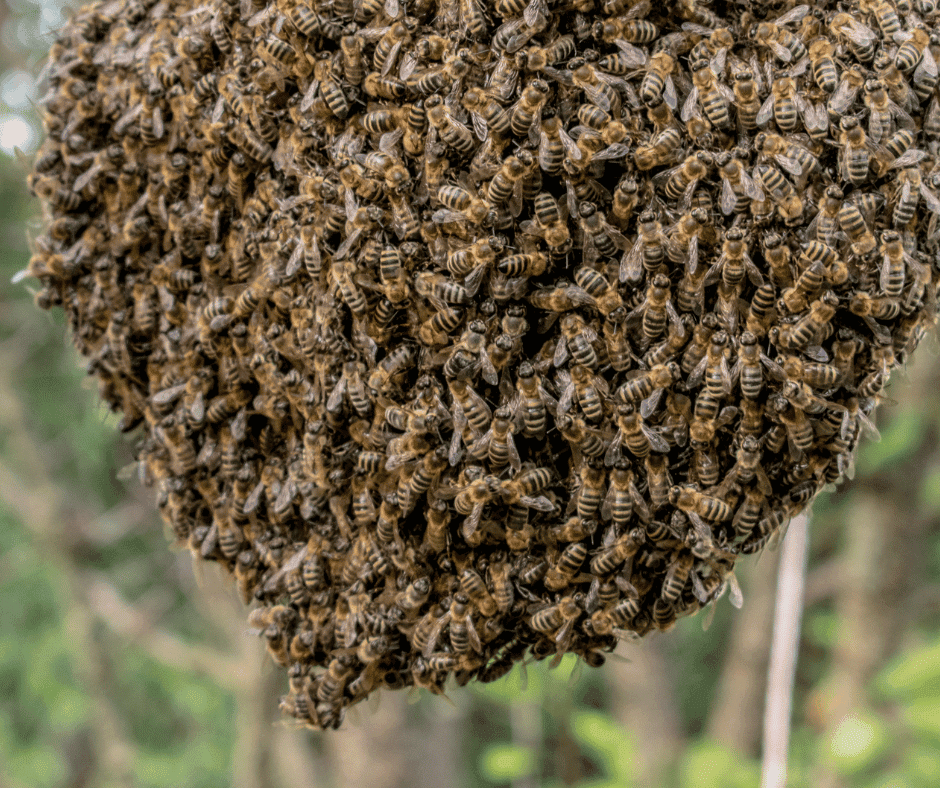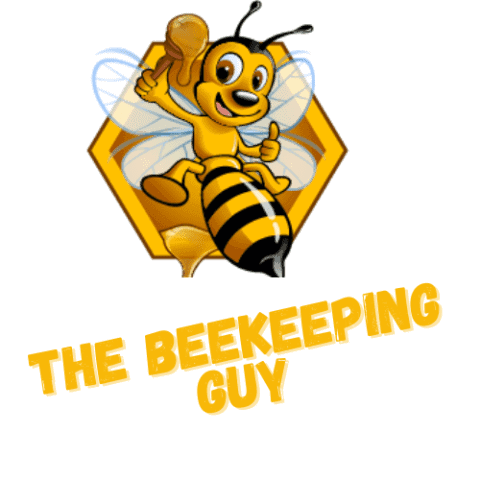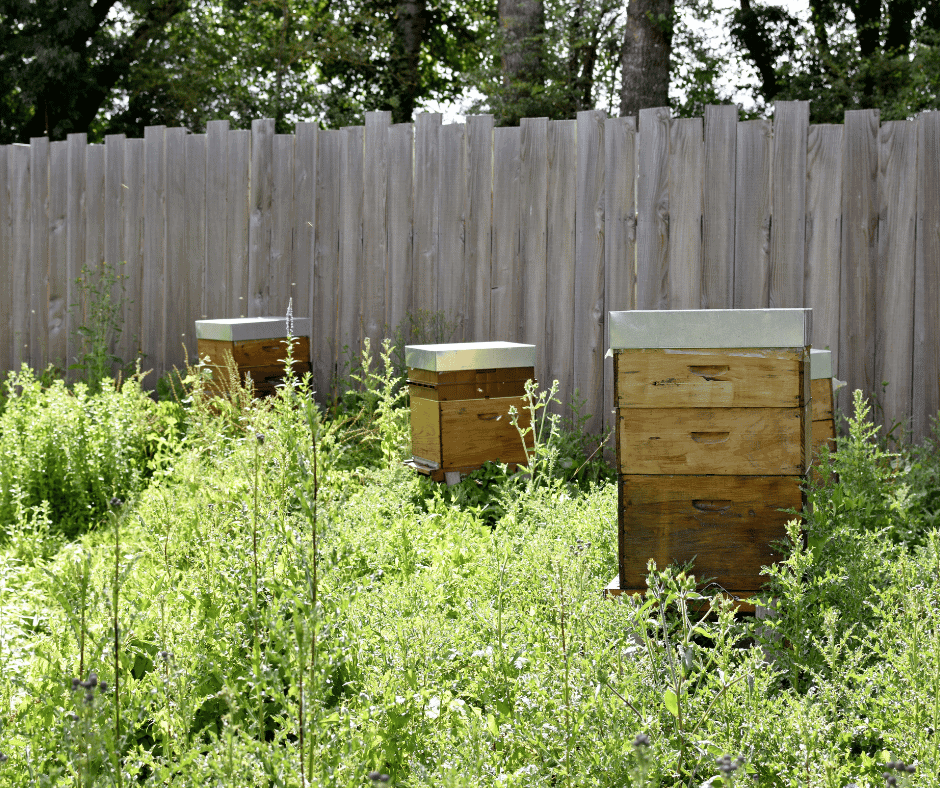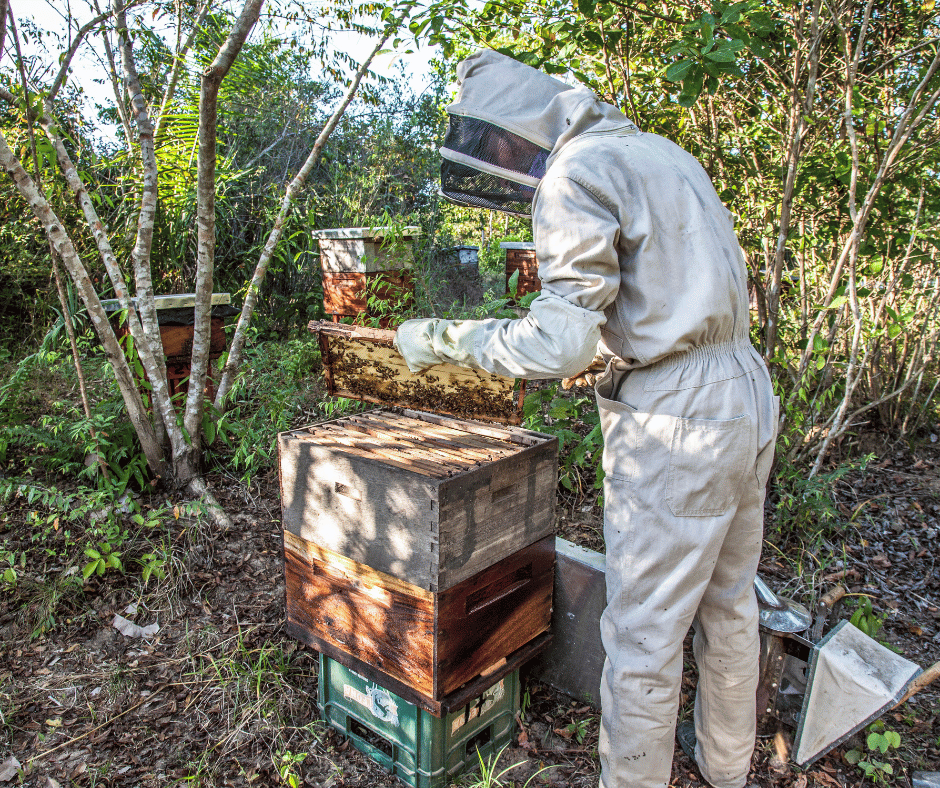
Capturing a bee swarm can be an intimidating process. It requires knowledge, patience, and the right materials to ensure that you safely capture them without causing harm to either yourself or the bees.
Luckily, with the right instructions and preparation, anyone can learn how to successfully capture a bee swarm. This article will guide you through each step of the process so that you can confidently take on this rewarding task and help keep our planet healthy by preserving these vital pollinators.
Table of Contents
Identifying And Locating The Swarm

Identifying and locating a bee swarm may seem daunting, but with the right tools and knowledge, you can easily find one. The first step to finding a bee swarm is doing some research on what types of bees are native to your area. This will help narrow down which swarms you should be looking for.
Once you have identified the type of bees in your area, look for locations that bees might inhabit such as trees, walls, or other structures. Look around during warm days when the temperatures are higher than 50 degrees Fahrenheit. Bees often congregate in these areas where they can get enough food and shelter from predators.
Next, keep an eye out for clusters of bees that appear to be larger than normal colonies. A typical colony consists of 10-20 thousand individuals while a swarm contains significantly more – up to 60 thousand or more!
You’ll want to take note of any large groups of bees so that you can inspect them further later if needed.
Once you’ve spotted a potential bee swarm, make sure to document its exact location by taking photos or making notes about nearby landmarks like buildings or street signs so that you don’t forget where it was located when you return with your equipment for capturing it.
With this information in hand, we’re now ready to move on to gathering the appropriate materials needed for catching the swarm…
Gathering The Appropriate Equipment
Capturing a bee swarm is no easy feat. It requires proper preparation and knowledge, as well as the appropriate equipment to make sure you can do it safely. To ensure that your experience catching bees goes smoothly, here are some items you’ll need when attempting to capture a swarm:
A sturdy box or hive for holding the captured bees should be your first priority. You’ll also want to have protective clothing such as gloves, long-sleeved shirts, hats, and veils in case of any stings. If possible, having an extra pair of hands available to help with collecting the swarm will make the process much easier. Finally, a few tools may come in handy during the collection process.
The most important thing to remember when gathering up all these supplies is safety first! Make sure you have everything on hand before beginning so there’s less chance of getting injured while trying to catch a swarm of bees.
With all this in mind, you’re now ready to start dressing appropriately and take necessary precautions against being stung by those pesky critters!
Dressing Appropriately To Avoid Stings

Gathering the appropriate equipment for capturing a bee swarm is only half of the battle. Now, you need to don your finest bee-catching attire if you want to be successful in catching these elusive creatures!
Before venturing out into the wilds of honeybee country, here are four key pieces of apparel that will help protect you from any potential stings:
- A long-sleeved shirt and pants made of thick material – think wool or similar fabrics
- Gloves that provide some degree of protection against stingers
- A wide-brimmed hat with netting designed specifically for protecting against bees and other pests
- Goggles or glasses to keep flying insects away from your eyes
Outfitted in this protective gear, you’re ready to take on the challenge of how to catch a honey bee swarm without fear.
Taking Precautions For Your Safety
Just make sure not to forget one important piece of advice — no matter how prepared you may feel, always remember to take precautions for your safety when dealing with an unpredictable creature like a bee swarm.
Protect yourself and those around you by always following best practices and being mindful of what could go wrong.
When catching bee swarms, safety is paramount. To ensure that you remain safe while capturing the swarm, it’s important to wear appropriate clothing and use protective equipment such as a hat with netting or a smoker.
And be mindful of any children or bystanders in the vicinity who may not understand what is happening and might accidentally get too close to the area during your attempt at catching a swarm.
Finally, take some time to observe how active and visible the hive is before starting so you can better judge their behavior prior to making an approach. This way, you’ll have a better idea of where exactly the colony is located and how best to proceed with capturing them safely for relocation without putting yourself or anyone else in danger.
Understanding Swarm Behavior
Having taken the necessary precautions to protect yourself and your property, you are now ready to understand swarm behavior. In order to successfully capture a honey bee swarm, it is important to know what triggers them.
Swarms can be triggered by overcrowding in their hive or when they need more space for food storage. When a group of bees leaves their current hive in search of an alternative home, this is known as swarming.
When catching a honey bee swarm, it’s crucial to remember that they may become agitated if disturbed too quickly. Therefore, it is best to observe from a distance before taking any action. It is also recommended that you slowly move closer until you reach about 10 feet away from the swarm; at this point, you should stop moving so as not to disturb them further.
Before attempting to catch the bees, make sure that all equipment needed is nearby and prepared beforehand- such as protective clothing, tools like ladders and boxes, and helpful items like sugar syrup or brushes used for coaxing them into containers with less stress on both sides involved.
With these tips in mind, approaching the swarm carefully while being mindful of safety will ensure the successful capture of the bee swarm!
Approaching The Swarm Carefully

It is believed that the best time to catch a swarm of bees is during the evening when they are done foraging and returning to their hive. However, this theory may not always be true as bee swarms can occur at any time throughout the day or night depending on various factors such as nectar availability and weather conditions.
When it comes to how to catch bees, approaching the swarm carefully is key – if you act too hastily, you risk frightening them off and potentially endangering yourself in the process. Here are four tips to remember when handling a honey bee swarm:
- Move slowly and stay low so that you don’t startle them
- If possible, wear protective clothing such as a hat with veiling material attached
- Avoid using smoke near the swarm as this will cause panic among the insects
- Talk calmly and reassure them with your words rather than movements
Approaching a bee swarm requires patience and caution – but with these tips in mind, you should be able to safely capture them without panicking either party.
Capturing The Swarm In A Container
Capturing the swarm of bees is a process that requires some knowledge and preparation before it can be completed successfully. The first step in catching a bee swarm is to locate the entrance to their hive; this could be a hole in a tree or even an existing man-made structure like a birdhouse.
Once you have identified where they are nesting, you need to prepare for how you will collect them. Depending on your experience level with bees and the size of the swarm, there are several ways to catch a bee swarm safely.
If you don’t have access to one of these specially made devices, then another option would be to use something as simple as empty cardboard boxes lined with newspaper – just make sure whatever container you choose has enough air holes so the bees can breathe!
Once you have selected the right type of vessel for containing your bee friends, place it near the opening of their hive and wait patiently until the evening when all but a few worker bees will return home from foraging.
During this time, any remaining stragglers may decide to join their colony inside your collection box – making it easier (and safer) for you to transport them into their new home.
As soon as most of the members of the swarm are contained within your chosen receptacle, it’s time to start transferring them into their own permanent hive.
Video On How To Make A Bee Vacuum
Transferring The Swarm Into A Hive
After successfully capturing the swarm in a container, transferring it into a hive is the next step. According to recent studies, beekeepers report that about 70% of swarms can be captured in containers and successfully transferred into hives. It’s important for every beekeeper to follow these steps when attempting this process:
- Make sure the new hive is ready with frames containing wax foundation or starter strips
- Transfer the bees from the container into the hive
- Place an empty box between the old and new boxes to ensure all remaining bees make their way inside the hive
- Securely close up the entrance of your hive
- Inspect your work closely to ensure everything is secure
By following these steps, you’ve now given your bees a safe home where they can begin building combs and collecting nectar and pollen. After securing your newly-transferred bee colony in its new home, monitoring for the activity will help determine if it has been successful.
Do Not Disturb The Bees For A Week
Now that you’ve caught your swarm, it’s important to give them their space for the first week. During this time, they’ll be constructing comb and starting to raise their young.
If you disturb them before that period is up, they may be so frustrated that they decide to leave. Keep in mind, they haven’t created any honey, comb, or brood yet, so they don’t have a lot invested in your hive. Even if you don’t bother them, they might still fly away.
To help keep the bees in your hive, try some of the following tricks: Get them a hive that was previously inhabited, place a queen excluder at the entrance, give them an empty comb, or give them an open brood comb from another hive. These techniques may help ensure that your bees stick around.
Monitoring The Hive For Activity

Once you have successfully captured the bee swarm and given them time to settle, it’s time to monitor the hive for activity. Begin by checking that bees are flying in and out of the opening regularly. This will indicate that they’ve become accustomed to their new home and are actively engaging with it.
You’ll also want to ensure there is no congestion at the entrance or within the inner chambers of the hive. If any issues arise, such as overcrowding or a lack of resources, then you should take steps to rectify this swiftly.
It’s important to note how much pollen is being collected during each monitoring session; if too little is being brought into the hive then supplementary feeders may need to be introduced. Also, keep an eye on how quickly the honeycomb is filling up – if production appears slow then further investigation may be needed.
Finally, once everything looks good and stable in terms of activity levels and health status, don’t forget about maintaining regular inspections; even when all seems well, small changes can occur quickly and unexpectedly so vigilance is key.
With careful observation and diligent maintenance, you’ll soon have a thriving bee colony ready to produce delicious honey! Looking ahead to our next section, we now turn our focus towards ensuring these hives maintain optimum health over time.
Maintaining Hive Health
The first step towards maintaining your bee hive’s health is managing airflow. The entrance of a beehive should remain open enough so they can get out but small enough to stop intruders from getting inside.
You also need to make sure that there aren’t any drafts or strong winds entering the hive as this may disrupt the bees’ activities. Additionally, providing adequate ventilation is essential for breaking down moisture within the hive – something which could cause mold if left unchecked.
Inspections are another important part of keeping your bee hives healthy. Inspections should be done regularly in order to spot any potential issues early and take corrective action when necessary.
During inspections, you’ll want to look out for signs of disease such as mites or wax moths; check food stores; observe egg-laying patterns; assess brood pattern quality; examine frames for signs of infestation; and ensure proper queen excluder placement.
Taking these precautionary steps will help you keep your colonies healthy and thriving!
Video On How To Catch And Install A Swarm
Conclusion
The experience of capturing a bee swarm is one that no person soon forgets. Once you’ve successfully caught the bees, it’s like stepping into a whole new world as they start to build their hive and create something beautiful and alive with your help.
It’s an incredible feeling of accomplishment when you observe them buzzing around and working diligently in their new home.
I’m so grateful for having been given the opportunity to witness this amazing process firsthand – it truly feels magical! The sight of those little creatures buzzing around brings me joy every time I see them.
Capturing a bee swarm has forever changed my life and opened up a realm of possibilities — all thanks to these wonderful insects!



